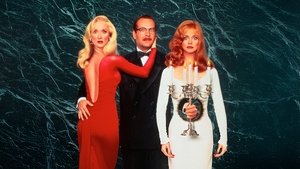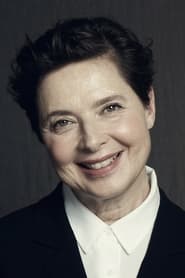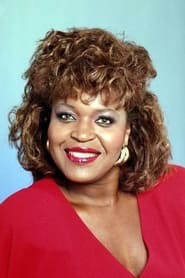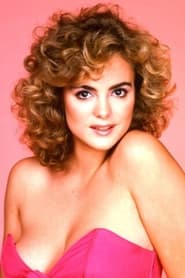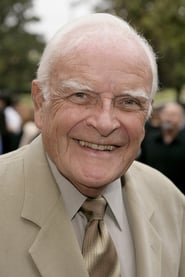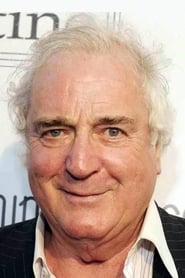Cast
View AllGoldie Hawn
as Helen Sharp
Bruce Willis
as Dr. Ernest Menville
Meryl Streep
as Madeline Ashton Menville
Isabella Rossellini
as Lisle von Rhuman
Ian Ogilvy
as Chagall
Adam Storke
as Dakota
Nancy Fish
as Rose
Alaina Reed Hall
as Psychologist
Michelle Johnson
as Anna
Mary Ellen Trainor
as Vivian Adams
William Frankfather
as Mr. Franklin
John Ingle
as Eulogist
Clement von Franckenstein
as Opening Man
Petrea Burchard
as Opening Woman
Jim Jansen
as Second Man
Crew
Director
- Robert Zemeckis
Writer
- David Koepp
- Martin Donovan
Producer
- Steve Starkey
- Robert Zemeckis
Reviews
CinemaSerf
"Helen" (Goldie Hawn) has always lived in the shadow of her friend, the successful actress "Madeline" (Meryl Streep), but when she loses her fiancée - renowned, if rather dowdy, plastic surgeon "Dr. Menville" (Bruce Willis) to her, she loses the plot. Eventually twice the size and evicted from her apartment with her hands still glued to the ice cream pot, she is sent to a mental institution were she finally concocts a plan for revenge. Meantime, the marriage has rather gone to seed. "Madeline" seeks comfort in the arms of younger men, but when her latest beau rejects her, she finds herself - via the kindly intervention of an almost unrecognisable Ian Ogilvy ("Chagall") - in the lair of the seductive "Lisle von Rhuman" (Isabella Rossellini) who offers her eternal youth. Of course there is a price - but will she pay it? What ensues for the last forty five minutes is really quite entertaining. Streep and Hawn look like they are enjoying themselves as their antics become comically macabre. Willis, the now bottle-hitting doctor - who has been largely reduced to manicuring corpses - is also clearly having some fun and Rossellini hams up wonderfully. The ending isn't my favourite, but I suppose it was "fair" and desserts were just. This is an amiable, feel-good, comedy with everyone on good form, some lovely snide dialogue and I liked it.
Jun 29, 2022
Thematic Analysis
This Comedy/Fantasy/Horror film explores themes of fear and survival, delving into the psychological aspects of human nature when confronted with the unknown. Death Becomes Her presents a unique perspective on the horror genre by focusing on the psychological terror rather than relying on typical jump scares.
Director Robert Zemeckis brings their distinctive visual style to this film, continuing their exploration of themes seen in their previous works while adding new elements. Their approach to pacing and visual storytelling creates a viewing experience that rewards close attention.
Released in 1992, the film exists within a cultural context that now offers viewers historical perspective on the social issues of that era. Its reception demonstrates the diverse reactions to its artistic choices and its place in cinema history.
Did You Know?
- The production of Death Becomes Her took approximately 25 months from pre-production to final cut.
- With a budget of $55.0 million, the film proved to be a financial success, earning back its investment and more.
- The final cut of the film runs for 104 minutes, though the director's initial assembly was reportedly 133 minutes long.
- Some visual effects sequences took up to 4 months to complete.
- The screenplay went through 13 major revisions before the final shooting script was approved.
- The costume department created over 390 unique costume pieces for the production.
Historical Context
- In 1992, when this film was released:
- The end of the Cold War was reshaping global politics.
- Digital technology was transforming the entertainment industry.
- Independent cinema was growing in influence, challenging the dominance of major studios.
How This Film Stands Out
While Death Becomes Her shares thematic elements with other films in its genre, it distinguishes itself through its unique approach to storytelling, visual style, and character development.
Unlike Pink Flamingos, which takes a more conventional approach to its subject matter, Death Becomes Her subverts genre expectations by exploring its themes with greater nuance.
While films like Shaun of the Dead and Monty Python and the Holy Grail explore similar territory, Death Becomes Her stands apart through its distinctive directorial vision and pacing.
This film's unique contribution to cinema lies in its bold artistic choices and willingness to challenge viewer expectations, making it a valuable addition to its genre.
Details
- Release Date: July 30, 1992
- Runtime: 1h 44m
- Budget: $55,000,000
- Revenue: $149,000,000
